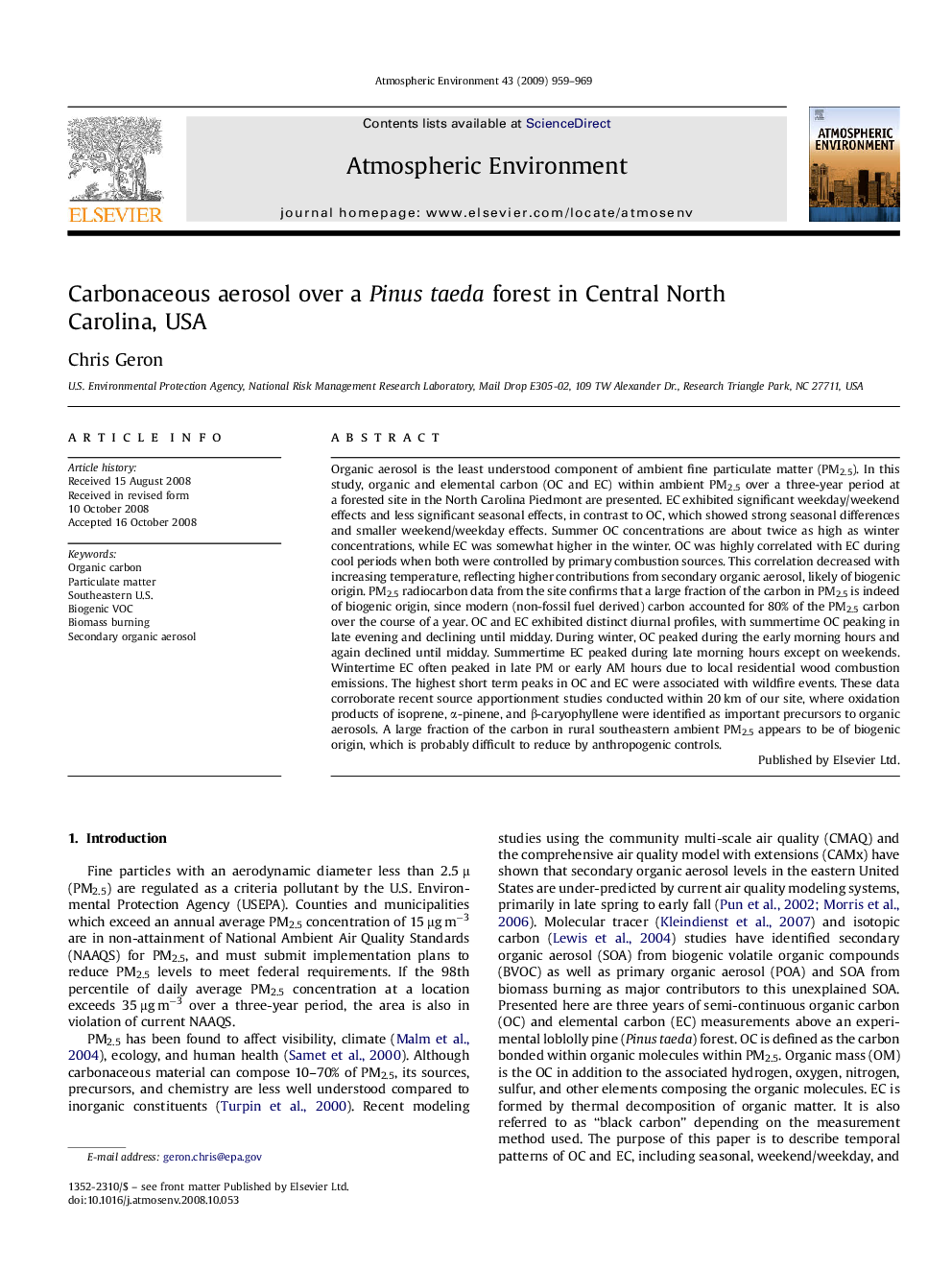| کد مقاله | کد نشریه | سال انتشار | مقاله انگلیسی | نسخه تمام متن |
|---|---|---|---|---|
| 4442132 | 1311138 | 2009 | 11 صفحه PDF | دانلود رایگان |

Organic aerosol is the least understood component of ambient fine particulate matter (PM2.5). In this study, organic and elemental carbon (OC and EC) within ambient PM2.5 over a three-year period at a forested site in the North Carolina Piedmont are presented. EC exhibited significant weekday/weekend effects and less significant seasonal effects, in contrast to OC, which showed strong seasonal differences and smaller weekend/weekday effects. Summer OC concentrations are about twice as high as winter concentrations, while EC was somewhat higher in the winter. OC was highly correlated with EC during cool periods when both were controlled by primary combustion sources. This correlation decreased with increasing temperature, reflecting higher contributions from secondary organic aerosol, likely of biogenic origin. PM2.5 radiocarbon data from the site confirms that a large fraction of the carbon in PM2.5 is indeed of biogenic origin, since modern (non-fossil fuel derived) carbon accounted for 80% of the PM2.5 carbon over the course of a year. OC and EC exhibited distinct diurnal profiles, with summertime OC peaking in late evening and declining until midday. During winter, OC peaked during the early morning hours and again declined until midday. Summertime EC peaked during late morning hours except on weekends. Wintertime EC often peaked in late PM or early AM hours due to local residential wood combustion emissions. The highest short term peaks in OC and EC were associated with wildfire events. These data corroborate recent source apportionment studies conducted within 20 km of our site, where oxidation products of isoprene, α-pinene, and β-caryophyllene were identified as important precursors to organic aerosols. A large fraction of the carbon in rural southeastern ambient PM2.5 appears to be of biogenic origin, which is probably difficult to reduce by anthropogenic controls.
Journal: Atmospheric Environment - Volume 43, Issue 4, February 2009, Pages 959–969